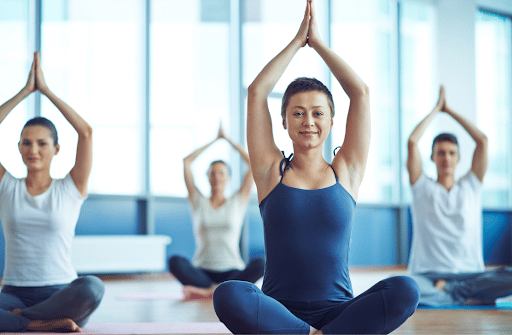In practice, different levels of yoga are usually differentiated. The most common are beginner level, intermediate level and advanced level. And it is common not to know very well which one belongs to.
It is a confusing subject. Each person has their own physical condition: it may be that you have just started practicing, but quickly manage to perform advanced postures in terms of strength and flexibility, due to a past as a gymnast or dancer, or on the contrary, even if you have been practicing for years , your body cannot perform postures due to its physiognomy.
So how is the level determined in practice?
The practice of yoga is not the performance of advanced postures or acrobatics, the level is not determined by strength or flexibility, but what determines the advancement in yoga is the capacity for awareness in the practice of asanas and sequences.
From my point of view, there is no specific criteria that determines the levels of yoga. Rather, it is a self-assessment that is achieved through experience, according to your physiognomy, your experience and your physical activity.
A teacher can guide you to know what is best for you to work on to evolve in your practice. But something very valuable that we can develop with the self-practice of yoga at home is our body awareness : knowing how we are in the posture, what we feel, how we breathe, what limits us, our emotions and thoughts.
Difference between initiation to yoga and beginner level
Often, where we find more confusion about the levels, it is at the beginner level, since it tends to include both those who have just discovered yoga and those who have been practicing regularly for a few months, but it can also be those who practice regularly. more sporadically, even if they take years. For this reason, I would like to distinguish between people who are starting to practice (complete beginner) from beginners who already have an initiation time (beginners).
Introduction to yoga
For a person who has just learned about yoga, the ideal is to be able to establish a solid foundation : go step by step, discovering and experimenting with simple sequences and adapted asanas. This will allow learning to build postures well to maintain them safely, without risk, to continue evolving. The best tool for this from my experience is repetition: practice and practice.
If this is your case, I recommend the Yoga Initiation Program available in Studio Online: a specific 4-week course to start with a solid foundation in practice. Once finished, you can continue practicing with this Practice Guide to start yoga and thus progress by following this 21-day calendar.
beginner yoga level
For a practitioner who has been in the discipline for a few months at the beginner level, you can start exploring yourself at the beginner level, trying out different hatha yoga classes and step-by-step asana videos for beginners.
If this is your case, you can follow this Practice Guide for Beginners : a calendar of selected classes to continue evolving your practice for 28 days available in Studio Online , where you will also find a wide catalog of classes to establish a good yoga routine.
Once you feel more proficient in your hatha yoga practice, you can start trying vinyasa classes, beginning to practice the transitions with a more dynamic rhythm. If you want to get started with a progressive method in this discipline, you can purchase the Vinyasa Yoga Basics Program , available soon in Studio Online.
When to go to intermediate and advanced level in yoga
Once your practice becomes more fluid, it is time to practice intermediate level yoga classes . Consistency and perseverance in practice are key to overcoming the initial frustration of not being able to perform the posture or keep up the pace. Self-respect and acceptance of physical limits are part of the yoga practice, in the same way as progress in it. And suddenly, one day you will be surprised to see how easy it is to practice what you resisted so much at first!
It is important to continue with the self- assessment to see if a class is too advanced: if you find it difficult to keep up, you can’t bring your attention to your breath in the asanas, or if it is gasping or through your mouth, if you feel that you are forcing your body ,… . My recommendation is that you spend more time on beginner yoga sequences and classes. Do not be in a hurry to advance in the levels of yoga.
If even knowing the postures, you feel that in practice there is too much tension when maintaining the asanas, you do not breathe smoothly through your nose, you choke or hyperventilate, or if you have trouble following the teacher’s instructions because you are putting a lot of tension to maintain the posture, my recommendation is to repeat this same class until you feel fluidity and comfort.
When you begin to flow with the breath, without forcing, in the movements and asanas, that is when we can consider it to be an intermediate level, and when you feel that you can begin to add challenges, an advanced level .
Sthira Sukham Asanam
One of the basic principles according to the Yoga Sutras of Patanjali that the yoga asana must comply with is sthira sukham asanam : to be stable and comfortable , finding the balance between strength and comfort. If you want to know more , in this article on my blog I explain this concept in more detail and what an asana is.
Yoga is a path of experience, it is not necessary to perform any specific posture to be a “good yogi “. It is not about looking at the body, or flexibility, or strength, but rather the ability to bring your mind to a state of calm and presence, from which the body benefits, obtaining greater well-being in your life.




